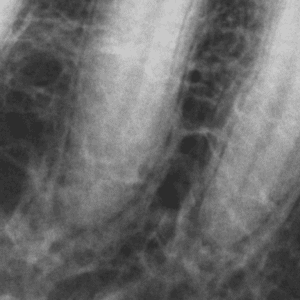Objective
A physical lens can improve the way visible light photons strike a detector, providing better information, and thus sharpening a visible light image without introducing artifact. However, when software manipulates a radiograph, it must work with the information it has. Therefore, when a sharpening filter enhances contrast at the edges of objects in a radiograph, it produces some unwanted artifact. Such artifact may increase noise or show contrasting bands of light or dark at a boundary (“over-shoot”). Sharpening filters are needed which can minimize these effects while sufficiently boosting edge contrast.
Design
XDR provides a pallet of technologies allowing the clinician to satisfy his or her own sharpening preferences. The resulting filters can enhance the edges of anatomic features in the radiograph while suppressing unwanted artifact. A subtle filter can maintain detail in very small objects such at the tip of a #6 endo file, while a more robust filter can greatly boost contrast in structures such as a PDL space.
Results
Figures 1a-1c show how sharpening can work with magnification to resolve important details, such as the extent of the tip of a #6 endo file. Figures 2a-2c show how sharpening can improve visibility of the PDL, beginning from the point of attachment all the way to the apical portion, elucidating any PDL thickening.
|
|
|
 |
 |
 |
|
 |
 |
Conclusions
As with all image enhancements, diagnosis should be confirmed on the un-enhanced image. But XDR’s sharpening tools can provide better elucidation of anatomic boundaries and the outlines of small objects, especially when these features are of low contrast, helping the clinician draw a more complete conclusion.
